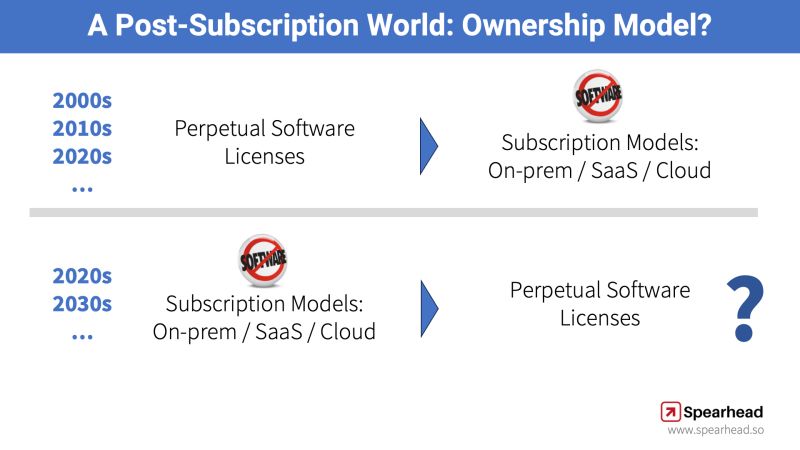Are we about to enter a post-subscription world?
For years, subscription model has become the dominant business model for digital products and services.
Software turned into Software as a Service.
Shipping services became subscriptions (I’m looking at you Amazon Prime).
Not just software and services, even hardware has turned into subscription: Apple has a iPhone subscription with PAYG pricing model with their iPhone Upgrade Program.
The SaaS (Software as a Service) model turned software into a rented service, a perpetual cycle of monthly payments without the sense of ownership. This model, while lucrative for providers, has often left businesses feeling like tenants in their own technological space.
However, something is changing. Customers are becoming interested in owning rather than renting.
Hence the rise of Ownership Business Model.
We are already hearing faint echoes of this business model taking hold.
Heard of repatriation? IDC estimates that over 70% of companies are moving at least some of their data from the cloud into their data centers to have a hybrid strategy.
Businesses are now considering upfront payments for enterprise software, seeking to reclaim ownership and control over their digital tools. This shift is driven by a desire for more autonomy, less dependency on recurring payments, and a stronger sense of investment in their technological infrastructure. It is possible that the post-SaaS era is upon us, signaling a return to the roots of software acquisition.
A great data point here is ONCE by 37signals. They were one of pioneers of the SaaS revolution. Now, two decades later, they are at the forefront of a software ownership model with a new enterprise software product that will be offered with ownership pricing.
The post-SaaS era is not just a trend; it’s a response to a growing need for more sustainable, controlled, and customized software solutions.
It’s about becoming more hybrid rather than subscription-only.
The post-SaaS era opens up new possibilities for businesses to invest in their future in a way that aligns with their values and long-term goals.
What are your thoughts? Will post-SaaS era result in an ownership business model?

